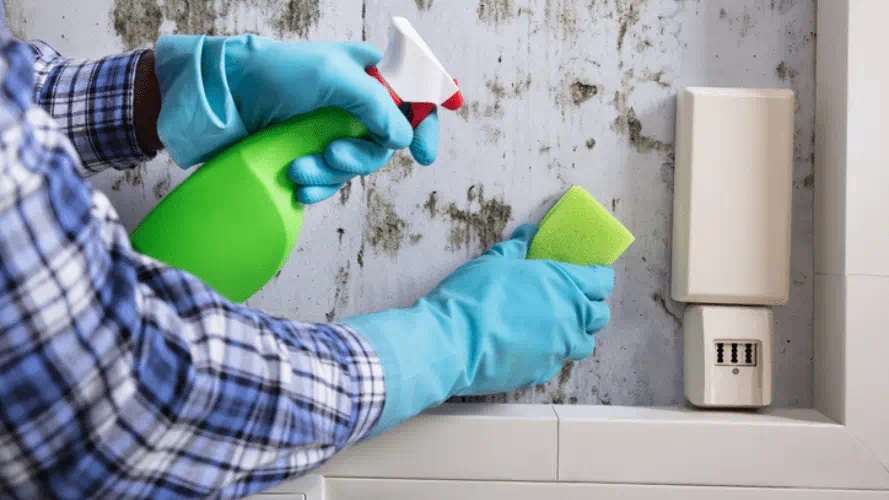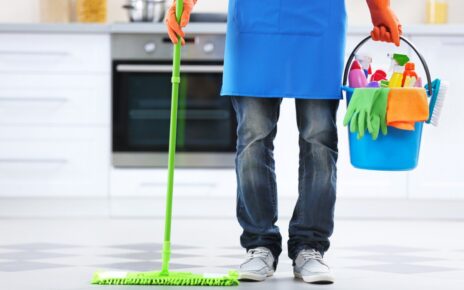Closing tenancy agreements thoughtfully paves the way towards ongoing improvement cycles—a proactive stance benefits all involved since maintained premises attract desirable occupants, leading towards mutually beneficial relationships built upon respectability standards upheld consistently throughout tenure periods.
By focusing intently on these elements within ‘Preparing for Inspection,’ we ensure comprehensive coverage that leaves neither party blindsided but rather well-equipped to handle this crucial aspect of property management professionally—and ultimately fosters harmonious occupant-owner dynamics rooted in shared responsibility towards maintaining housing quality standards long-term.
Setting the Standards for Cleaning
Before a tenant moves out, it’s essential to establish what constitutes ‘acceptable cleanliness’ for a property. This involves distinguishing between normal wear and tear—a natural and expected decline in property condition due to everyday use—and issues that stem from neglect or improper cleaning practices.
For example, scuffed paintwork or lightly worn carpeting typically falls under wear and tear. In contrast, heavy staining on carpets or grease buildup in an oven indicates inadequate cleaning efforts.
To clarify expectations, many landlords provide tenants with a detailed checklist upon move-in which can be referred back to when preparing for an end-of-tenancy inspection. A sample checklist might include:
- Deep clean all kitchen appliances (oven, refrigerator, microwave);
- Wash windows inside (and possibly outside if accessible);
- Clean all bathrooms thoroughly, including tiles and grouting;
- Vacuum all floors; wash any hard floors;
- Dust surfaces, including tops of doors and window frames;
- Ensure fixtures such as light fittings are dust-free.
By providing such checklists upfront, landlords help prevent disputes over cleanliness standards at the end of tenancies.
Legal Considerations
In setting these standards, one must consider legal implications within UK housing laws—specifically regulations regarding deposit deductions. The Tenancy Deposit Scheme protects tenants from unfair deposit reductions while holding them accountable for surpassing acceptable levels of wear and tear.
Deposits cannot legally be withheld without proper justification; therefore, thorough documentation through inventory reports completed at move-in—and compared against those done at move-out—is crucial for substantiating claims related to cleaning costs.
Managing Conflicts and Feedback from Tenants
Property inspections can often give rise to disputes, as differing viewpoints on the state of the property between check-out and check-in can frequently occur. In such instances, where effective communication is much needed, it seems to lack the most. By facilitating communication and cooperation it allows both landlords and tenants to express their complaints and work together to resolve issues, thereby avoiding further conflicts.
To improve relations after an inspection, create a feedback loop. Landlords can offer suggestions for cleanliness and invite tenants to share their rental experience for future improvements. This promotes understanding and continuous improvement for both parties.
Documenting every step of the inspection process is beneficial for both parties as it provides evidence that can support or refute any claims. For instance, taking date-stamped photos before and after move-in can serve as visual proof of any changes in the condition of the property. This practice helps to avoid disagreements over whether any damage or wear-and-tear occurred during the tenancy.
For example, if a tenant leaves stains on the carpet that were not there before, the landlord may deduct the cost of professional cleaning from the deposit. Invoices or quotes should be provided to explain the deductions.
The legal framework within which these processes operate in the UK includes mechanisms like The Tenancy Deposit Scheme (TDS), which offers guidance on fair deposit deductions while also providing dispute resolution services if an agreement cannot be reached independently between landlord and tenant.
Impact on Deposit Returns
Deposit returns can become contentious when there’s a disagreement over cleaning standards at the end of a tenancy agreement. In accordance with UK law—particularly outlined through government-approved schemes like TDS—the basis for any deduction from security deposits must be justifiable wear-and-tear versus damages caused by negligence or breach of contract terms related to maintenance, including cleanliness levels expected upon vacating premises.
Communication plays an integral role here: landlords should clearly articulate what constitutes acceptable ‘wear-and-tear’ versus chargeable ‘damage’ early in tenancy agreements so that expectations are set from day one—a detailed inventory signed off by both parties serves well for this purpose as well as periodic checks throughout tenure reinforcing mutual awareness about state upkeep requirements.
Avoiding common disputes linked with cleaning involves proactive measures like supplying new tenants with thorough guidelines outlining expected conditions upon departure coupled with practical advice—for instance, suggesting routine deep-cleaning schedules during long-term stays mitigates the accumulation of difficult-to-remove grime, thereby reducing the likelihood of hefty deductions later stage due neglectful habits developed over time.
Landlords have duties, including promptly returning deposits with clear explanations if they have a valid reason to hold onto the money. This maintains trust and respect in the landlord-tenant relationship and follows local laws to prevent conflicts and delays. Proper handling of these responsibilities is crucial for a smooth transition and successful future rental experiences, as governed by residential lease regulations.
Inspection Process: What Landlords Look For
Landlords seeking assurance that their property has been well-maintained should look beyond superficial tidiness during inspections:
- Check high-traffic areas like entryways, where dirt accumulates quickly.
- Inspect behind furniture where dust bunnies hide.
- Examine tile grout in showers/baths; mould here can indicate poor ventilation habits.
- Assess cupboards/wardrobes—are they wiped down?
These points illustrate not just surface-level cleanliness but also signal how diligently a tenant has cared for the space overall.
Advice For Tenants: Preparing For Inspection
Tenants looking to recover their full deposit should take proactive steps before inspection day:
- Address any damage you’ve caused promptly—this shows responsibility.
- Refer back to your initial inventory report/checklist as you clean every room thoroughly.
- Don’t overlook often-forgotten areas like tops of cabinets or underneath beds.
- If certain tasks feel overwhelming (e.g., professional carpet cleaning), consider hiring specialists; keep receipts as proof!
As parting advice: Communication between landlord and tenant is key throughout this process—to discuss concerns early on prevents misunderstandings later during inspections.
Preparing for the Inspection
Success in a cleaning inspection hinges on meticulous preparation. Landlords must understand that assembling an inspection toolkit goes beyond a simple checklist; it should include items like gloves, a flashlight for inspecting under furniture and dark corners, and perhaps even a digital camera to document conditions. This toolkit serves not just as an aid during inspection but also as evidence if disputes arise later.
Tenants, on their part, benefit greatly from pre-inspection preparations. Conducting self-checks can be likened to studying before an exam – it’s about identifying issues ahead of time and addressing them proactively. For example, tenants might check areas commonly overlooked during regular cleaning, such as behind doors or window tracks where dust and grime accumulate.
The timing of inspections is another critical factor. Ideally, landlords and tenants should aim for daylight hours when imperfections are most visible. Aligning schedules may require negotiation; however, establishing clear communication early on sets expectations effectively—this could mean sending confirmation emails with a date and time or discussing the scope of the inspection beforehand.
An inventory report plays a pivotal role by providing both parties with a detailed account of the property’s condition at move-in. This becomes the benchmark against which cleanliness is gauged during subsequent inspections.
Key Areas to Focus On During Inspection
Adopting a room-by-room approach ensures no space is neglected during the cleaning inspection process. In high-traffic areas like kitchens – often bustling hubs of activity – one must examine appliances inside out (e.g., checking for food spills in microwaves). Bathrooms warrant careful scrutiny, too: limescale around faucets or mould on tiles and grout are common red flags signalling inadequate maintenance.
In living spaces where aesthetics matter greatly, walls should be free from scuffs, while floors ought to show consistent care whether they’re hardwood or carpeted—a landlord might note how well vacuum lines appear on carpets as an indicator of thoroughness. Windows serve two purposes: allowing light into rooms while offering views outside; thus they need regular washing both internally and externally to maintain these functions optimally.
Hidden areas shouldn’t escape notice either—underneath appliances lie potential havens for pests. If crumbs remain uncleaned inside cupboards, forgotten spills can cause lingering odours or attract insects.
Finalising the Cleaning Inspection
Upon concluding an inspection, finalising checklists help encapsulate observations systematically—for instance, noting any discrepancies between current conditions versus those documented in initial reports aids transparency between landlord and tenant regarding responsibilities addressed post-inspection.
Balanced feedback is essential when engaging with cleaning services—it’s about recognising commendable efforts whilst constructively pointing out deficiencies without assigning blame unfairly; say, praising spotless countertops yet highlighting dusty ceiling fans missed above eye level.
Finally, preparing properties for new tenancies involves more than superficial tidiness—it includes ensuring all utilities function correctly (like verifying hot water availability), safety checks (such as smoke detectors being operational), plus considering aesthetic touch-ups that enhance appeal (perhaps repainting faded walls).
Summarising findings creates clarity among stakeholders—landlords gain insights into upkeep levels affecting property value over time, whereas tenants understand expectations better moving forward.
Evaluating Professional Cleaning Work
For landlords, the state of their property is a reflection of their commitment to providing a clean and hospitable environment for tenants. Therefore, evaluating the quality of professional cleaning work becomes an indispensable part of property management. By ensuring that a high standard is maintained, landlords not only protect their investment but also enhance tenant satisfaction and retention.
When choosing a reliable cleaning service, it’s crucial for both landlords and tenants to consider several factors. Firstly, research potential cleaning companies by reading reviews and testimonials from previous clients—this can offer valuable insights into the consistency and reliability of their services. For example, if you find multiple reviews praising a company for its thoroughness in areas often overlooked—such as behind appliances or inside cabinets—you can feel more confident in their attention to detail.
Once you’ve narrowed down your options, inquire about the training and background checks that cleaners undergo before being hired. A reputable service will have no issue discussing these protocols with you; this transparency is indicative of professionalism.
After selecting a cleaning provider to do the tenancy cleaning, establish clear communication regarding expectations and the scope of work. Requesting before-and-after photos can be an effective way to document the cleanliness level achieved within various areas of your property—for instance, gleaming floors post-buffing or sparkling windows after washing.
In cases where the delivered cleaning fails to meet agreed-upon standards—a bathroom left with grime around fixtures or dust still lingering on ceiling fans—it’s important to have steps in place for recourse. Documenting issues promptly through photographs provides concrete evidence when addressing concerns with the service provider.
This brings us to another critical aspect: keeping receipts and detailed documentation of services rendered serves multiple purposes—it acts as a proof for tax deductions related to rental business expenses while also establishing accountability should disputes arise over provided services’ quality or extent.
Moreover, considering eco-friendly alternatives has become increasingly relevant as environmental consciousness grows among consumers—including renters who may prefer living spaces maintained without harsh chemicals. Eco-friendly services use biodegradable products that are less abrasive on surfaces yet equally effective at sanitising spaces—a win-win scenario contributing positively towards indoor air quality while reducing ecological footprints (e.g., using microfiber cloths instead of paper towels reduces waste).
Landlords might highlight green practices like using HEPA-filtered vacuums, which trap fine particles such as pollen or pet dander better than conventional ones—an added value proposition especially appealing to allergy sufferers among prospective tenants.
To sum up:
- Research thoroughly. Read online reviews focusing on specific examples demonstrating companies’ meticulousness.
- Verify credentials. Ensure staff training aligns with industry standards.
- Set clear expectations: Use visual aids like checklists outlining tasks expected of cleaners.
- Keep detailed records. Maintain organised files containing contracts/receipts/photos showing pre- vs post-cleaning conditions.
- Address shortcomings immediately. Present documented instances when results fall short alongside proposed solutions.
- Embrace sustainability. Opt for providers utilising environmentally responsible methods/products; advertise this unique selling point, effectively targeting eco-aware market segments.
Conclusion
In conclusion, post-end of tenancy cleaning inspections are a critical phase in the rental journey, ensuring that rental properties are returned in top condition. By adhering strictly to these guidelines while maintaining active oversight over chosen professional cleaning operations—and holding them accountable via structured evaluations—landlords secure peace-of-mind knowing they’ve done due diligence safeguarding both tenant wellbeing along with real estate investments’ integrity alike.





